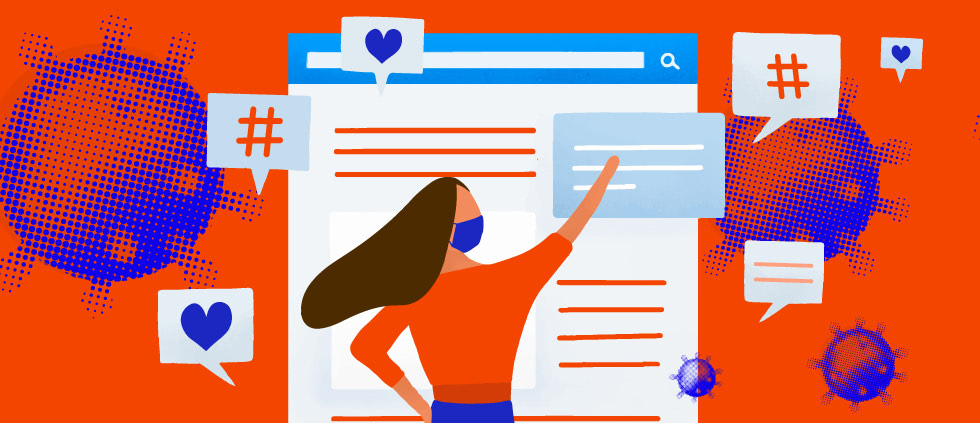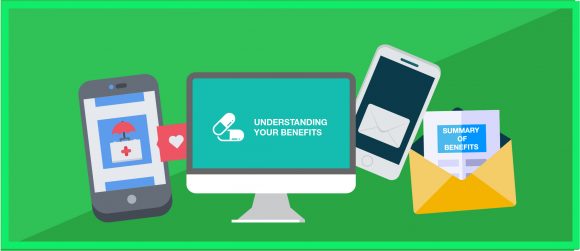Social Content Marketing and Healthcare: Takeaways and Lessons Learned from the COVID-19 Pandemic

What a year it’s been… and it’s not over yet! 2020 has definitely been one for the history books. As healthcare marketers working closely with health insurers, hospital and health systems and health tech companies, we have faced a lot of unique challenges. Back in April when the COVID-19 pandemic was top-of-mind everywhere, we wrote about whether or not health insurers should continue to market. As healthcare social content marketers, we asked ourselves the same question. The role of social media and content marketing in healthcare is growing in importance. As Sprout Social put it, “Healthcare providers are in a unique position when it comes to social media. Because you’re responsible for marketing a human necessity, not a traditional product or impulse buy.”
With this in mind, and based on experience working as a healthcare social content manager during the COVID-19 pandemic, here are a few takeaways and lessons learned.
1. It’s okay to hit the “pause” button for a short time to reassess and reset.
With a major public health crisis like COVID-19, you want to make sure that you are using the right tone and messaging. Back in March at Media Logic, we hit the “pause” button with our social content marketing clients and sat down with each of them individually to discuss a plan for how to proceed moving forward during the COVID-19 pandemic. It doesn’t mean that you have to throw out that beautiful, detailed editorial plan, but it might mean that you need to adjust and rework it here and there to make sure the messaging and content you are creating matches what consumers want and need to read about. As a social content marketing manager, it’s important to be nimble. With a chance that the pandemic may re-surge, this really comes into play.
2. It’s *just* not about vanity metrics, but about educating the public.
The Content Marketing Institute defines vanity metrics as “impressions, “likes,” shares, comments, followers, open rates, views, traffic, time on site, bounce rate, and more. They are also known as “consumption metrics” or “engagement metrics.” It’s very easy to use these metrics to measure the success of social media campaigns, but when it comes to social content marketing and healthcare, it’s about so much more than that! According to a PwC COVID-19 Consumer Survey from April 2020, 26% of consumers said they’ve received information on what to do from social media while only 11% said they’d received information from their primary care doctor. There is a need for healthcare content marketers to use blog posts, videos, general health tips and their social media platforms to create and publish educational content for members and patients.
3. When people are anxious and the mood is negative, find authentic ways to be inspirational and spread positivity.
Just because the mood is serious does not always mean that healthcare social content needs to be boring or heartless. It’s about finding a balance between providing facts and being direct and also sharing inspirational and positive content. For example, Aspire Health Plan (client), a Medicare Advantage plan in Monterey County, California, gathered local resources and called each member during COVID-19 to see how they were doing and find out if they had any needs. They identified a mask shortage, so they then used resources to gather fabric donations and recruited members to make masks for other members in need. Sharing this content on their Facebook page spread a positive message within the community while also showing how the plan is committed to member’s health and well-being. Another suggestion is to take members behind the scenes. As Sprout Social says “highlighting your human side helps your social presence feel more personal.” During Nurses Week, UCSF Radiology (client) shared photos of their nurses wearing masks to celebrate their hard work. This is just one of the many examples used by hospitals and health systems to provide both a positive spin on working in healthcare during challenging times while also mixing in upbeat, wholesome content.
4. Beyond COVID-19, social content marketing will continue to be a key component of the member and patient experience.
Even before the COVID-19 pandemic, social media in healthcare was becoming a greater priority. This should come as no surprise since about 80% of Internet users have searched for health-related topics online, according to the Pew Internet & American Life Project. Healthcare providers and payers alike are doing more to provide both accurate, meaningful and timely information for members and social media platforms are the ideal place to distribute this information.
So, while yes, being a healthcare social content marketer during the COVID-19 pandemic has been challenging, it is definitely rewarding. The opportunity to truly have an impact on consumers who are following an organization, or who are just looking for accurate, important information is great. No matter what, as marketers, it is our job to take care (pun intended) and build trust between the public and healthcare organizations.







